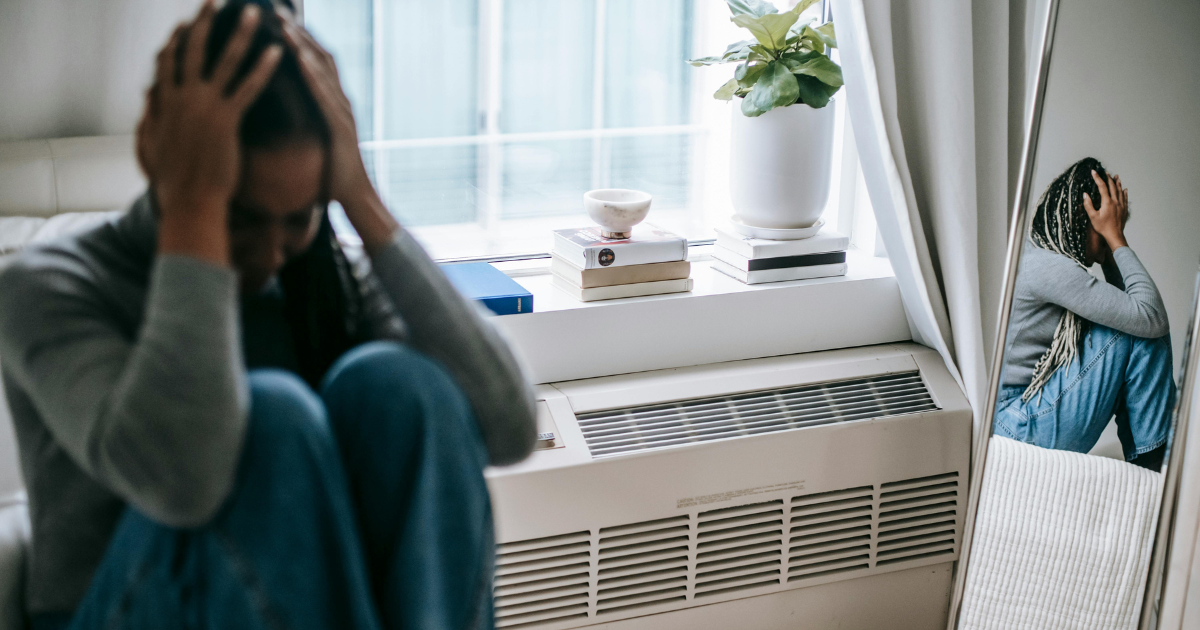Are you thinking about getting off Clonazepam? That’s a big step, and it certainly is not easy. You might be here because you’re trying to quit or maybe helping someone else through it. Either way, you’re not alone. The truth is, a lot of people struggle with this step, even when they’re sure they want off the drug.
Maybe you were prescribed it for anxiety or panic attacks. Or maybe it helped with sleep. Over time, though, your system started to really depend on it. So, when you begin cutting back, things might start feeling weird.
Quitting this medication is rough. But it’s doable, especially when you have the right information, the right support, and a clear plan. That’s what this guide is for: to walk you through the mess and help you start feeling like yourself again.
What Is Clonazepam, and Why Is Withdrawal So Challenging?
Clonazepam (you might know it as Klonopin) is part of a group of medications called benzodiazepines. These are powerful tranquilizers that slow down brain activity, which helps people feel calm. It’s often used for anxiety, seizures, panic disorders, and even insomnia in some cases.
It works. Fast. If someone’s panicking daily, Clonazepam can bring them relief within hours. But that effectiveness comes with a cost. Stick with it too long, and your brain basically forgets how to feel calm and not anxious on its own. That’s when the trouble begins, especially if you try to quit too quickly.
Understanding Clonazepam’s Effects on the Brain and Body
Let’s break this down. Clonazepam works by boosting GABA (gamma-aminobutyric acid), which is your brain’s natural calming agent. GABA tells your nervous system, “Take it easy,” and slows everything down.
That’s why it’s useful for panic or anxiety. It quiets the mental chaos. But here’s the catch: If your brain gets a steady supply of GABA from a pill, it starts making less of its own.
So, after weeks or months of taking Clonazepam, your brain gets lazy. When you take the medication away, the body’s left scrambling. Your nerves start overfiring because there’s not enough GABA to keep things under control.
That’s when Clonazepam withdrawal kicks in, and it can get messy.
| System | What Clonazepam Does |
| Brain | Calms nerve signals, boosts GABA, lowers overstimulation |
| Muscles | Relaxes tightness, eases spasms |
| Sleep | Makes you drowsy or helps with insomnia early on |
| Mood | Reduces anxiety, panic, and intense stress |
Why Benzodiazepine Withdrawal Is Unique
Benzodiazepine withdrawal is no joke. It’s not like quitting coffee or even nicotine. It messes with your whole nervous system.
Why is it so intense? Because your brain basically outsourced its calming duties to Clonazepam. When that crutch gets pulled out too fast, everything becomes shaky.
Touchstone Recovery Center
Recognizing the Symptoms of Clonazepam Withdrawal
Everyone’s experience is a little different. But here are the common withdrawal symptoms you might notice during Clonazepam detox:
Physical Symptoms:
- Shaky or trembling hands
- Sweats (even when it’s not hot)
- Stomach cramps, nausea
- Muscle aches
- Headaches that won’t quit
- Feeling dizzy or off-balance
Mental/Emotional Symptoms:
- Anxiety that’s worse than before
- Panic attacks out of nowhere
- Mood swings or irritability
- Trouble sleeping, or weird sleep cycles
- Brain fog or feeling “out of it”
- Depression
Severe Symptoms (get help immediately):
- Hallucinations
- Seizures
- Thoughts of self-harm or suicide
Safe and Effective Tapering Techniques
If you’re thinking of quitting cold turkey, don’t. That route is risky, especially if you’ve been using Clonazepam for months or more. The rebound symptoms can be brutal. This includes serious symptoms – sleepless nights, uncontrollable shaking, even seizures.
Instead, the smart move is tapering off Clonazepam. That means cutting down the dose slowly, over time. The idea? Let your brain start relearning how to manage things without the medication, one tiny step at a time.

Each reduction gives your body a chance to rebalance. Your sleep, mood, and nerves can gradually reset without hitting panic mode.
This process isn’t quick, and that’s completely fine. The goal here is safe and steady, not fast and risky. Think marathon, not sprint.
The Importance of Medical Supervision
Working with a healthcare professional can seriously improve your odds. They’ll build a Clonazepam taper schedule that fits your situation, your dosage, how long you’ve been taking it, and how your body reacts.
Here’s an example of what a very gentle taper might look like:
| Week | Dose |
| 1–2 | 0.5 mg twice daily |
| 3–4 | 0.375 mg twice daily |
| 5–6 | 0.25 mg twice daily |
| 7–8 | 0.25 mg once daily |
| 9+ | 0.125 mg or stay steady before stopping |
Not everyone follows this exact schedule. Some go even slower. And that’s okay. The point is to make it manageable, so your brain isn’t shocked into chaos.
Touchstone Recovery Center
Mindfulness and Relaxation Strategies That Support Recovery
The truth is, withdrawal isn’t just about the body; it’s also a mental ride. Having emotional tools in your back pocket can help.
Try weaving in some of these practices during your Clonazepam withdrawal process:
Mind-Body Tools:
- Box breathing: Breathe in 4 sec, hold 4, out 4, hold 4.
- Muscle relaxation: Tense then release each part of your body.
- Meditation apps: Calm, Headspace, Insight Timer, you can take your pick
Other Helpful Practices:
- Journaling (doesn’t need to be neat, just dump it out)
- Walks, stretching, or light movement
- Time in nature, this helps more than you’d think
- Setting boundaries with stressful people
Nutrition and Wellness Tips for the Withdrawal Process
Your body’s going through a lot right now, so what you eat can either help or make it harder. Here’s a quick cheat sheet on foods to include during your Clonazepam detox:
| Type | Examples | Why It Helps |
| Complex Carbs | Brown rice, oats, quinoa | Boosts serotonin, stabilizes mood |
| Magnesium Foods | Spinach, almonds, bananas | Helps calm nerves, eases tension |
| Water-Rich Foods | Watermelon, cucumbers | Keeps you hydrated, reduces headaches |
| Lean Protein | Chicken, tofu, eggs | Maintains focus and energy levels |
Also, ease off caffeine and skip the energy drinks. They jack up anxiety, and you really don’t need that right now.
Your Path to Recovery Starts With Touch Stone Recovery Center
Going through Clonazepam withdrawal is more than just a physical process. It’s emotional. It’s exhausting. Some days you’ll feel like you’ve got this. And then out of nowhere, you don’t. One minute, you’re tossing out your pills feeling proud, and the next? You’re scouring drawers just to see if one’s left. That spiral happens. You’re not weak, it’s the drug’s hold, and it’s real.
This is why trying to detox alone makes things ten times harder. Having a support system, one that understands Clonazepam dependence and the reality of this journey, can make all the difference. You shouldn’t have to battle this in isolation.
At Touch Stone Recovery Center, we’ve walked alongside people through this exact struggle. We know how overwhelming it can be, and we’re not here to judge. Our team focuses on making Clonazepam addiction treatment something human and achievable, not scary or sterile. You get personalized care, real conversations, and professionals who understand benzodiazepine withdrawal isn’t one-size-fits-all. From setting up a Clonazepam taper schedule to handling rough emotional days, we’re here to help you make it through safely and with dignity.
Don’t wait for things to spiral. Contact Touch Stone Recovery Center today so we can help manage your Clonazepam withdrawal symptoms together.

Touchstone Recovery Center
FAQs
What are common withdrawal symptoms associated with Clonazepam detox?
During Clonazepam detox, your body might react with symptoms like shaking, insomnia, nausea, or increased anxiety. Some people also feel foggy or super irritable. And in rare cases? There could be hallucinations or seizures, so medical supervision is very important.
How can a Clonazepam taper schedule help in reducing benzodiazepine withdrawal symptoms?
Taking it slow is key. A taper schedule lets your body gradually adjust so you’re not hit with everything at once. Instead of yanking the med out of your system, you’re slowly stepping down. That gives your brain time to relearn how to self-regulate, which helps avoid severe withdrawal symptoms.
What are the key differences between Clonazepam dependence and Clonazepam addiction treatment?
Clonazepam dependence is mostly physical; your body’s used to it and reacts when it’s gone. But addiction? That’s when the cravings take over your thoughts and choices. Clonazepam addiction treatment focuses on both sides: the physical withdrawal and the mental/emotional need for the drug.
How does tapering off Clonazepam reduce the risk of severe Clonazepam side effects?
Tapering gives your nervous system space to breathe. Quitting suddenly could trigger severe Clonazepam side effects, like seizures, intense panic, or worse. Think of tapering like easing the brakes instead of slamming them.
What are the best practices for managing Clonazepam withdrawal during detox?
Start by working with a doctor; don’t go solo. Eat nourishing food, stay hydrated, sleep when you can (and rest even when you can’t), and move your body in light ways. Add in therapy or support groups when possible. And if you’re struggling? Don’t wait to ask for help.







